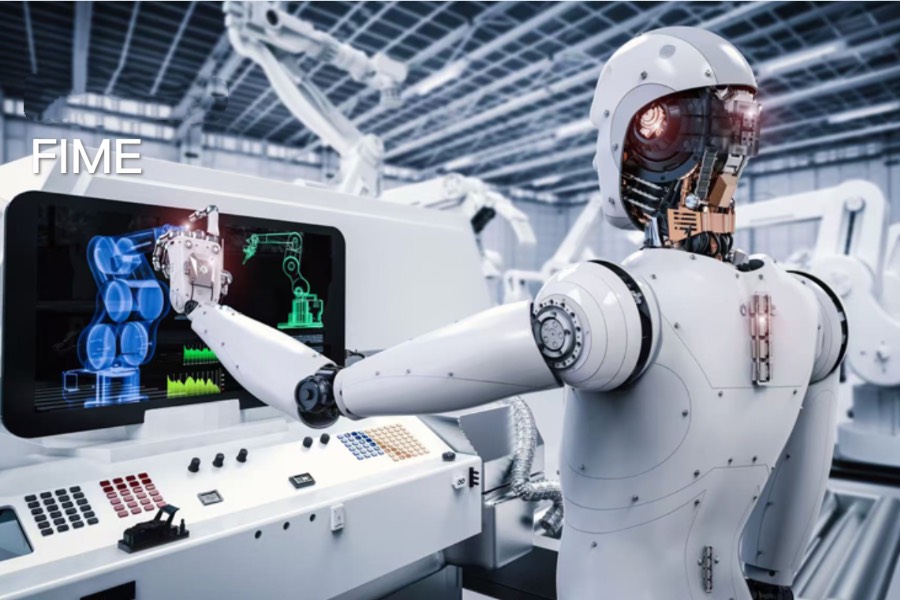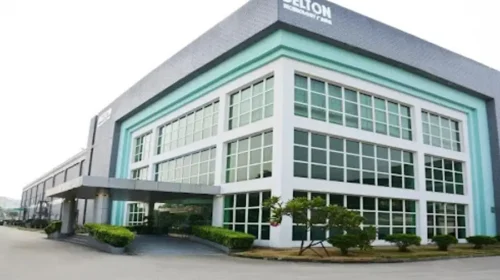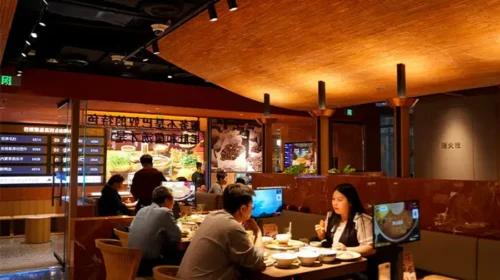Shoucheng sheds ‘old economy’ label with robotic pivot

The company, whose businesses over the years have included everything from steel to fund management, is trying its hand at robotic investment and incubation
Key Takeaways:
- Shoucheng’s gross profit declined in the first quarter, but its profit jumped more than 80%, amid its ongoing move into robotic investment
- The company’s pivot into robotics is being led by its establishment of a related fund whose holdings include a stake in up-and-comer Unitree Robotics
By Bai Xinrui
The dawn of the AI era has lifted stocks in industries poised to benefit, including makers of robots – an area that even electric vehicle giant Tesla is eying with plans for humanoid robots. Further down the tech food chain, older economy stock Shoucheng Holdings Ltd. (0697) is trying to jump on the robotic bandwagon, as part of an ongoing overhaul to position itself for future growth.
It updated investors on its latest moves on that front, as well as metrics on its latest financial health, in its first-quarter results released earlier this month. Those showed the company is still solidly profitable, reporting an 80% year-on-year rise in its net profit for the period.
From steel to fund management, parking lot operation
Originally known as Shougang Concord International, the company’s history as a publicly traded company dates back more than 30 years to its Hong Kong listing in 1991. After starting in the steel business, Shoucheng began a major overhaul in 2016 by stripping out its traditional business lines, including steel manufacturing, mineral extraction and processing activities, and pivoted to fund management and parking lot operation.
It brought in new strategic shareholders in 2018 and 2019 and changed its name to Shoucheng Holdings in 2020 to reflect its overhaul. As it observed rapid development in the global robotics business, it decided to move into that arena as well with its establishment of a robotics fund in 2024, followed by a robotics company this year.
The company’s 2024 annual report shows that Beijing Shougang Group is its largest shareholder with 24.9% of its stock, followed by Japanese leasing company ORIX Corp. (IX.US; 8591.JP) with a 14.3% stake. It also counts some big names among its other major shareholders, including Cheng Yu Tung Family (Holdings) Ltd. under the Chow Tai Fook Group with 11.5%; Beijing State-owned Capital Operation and Management with 10%; Sunshine Insurance with 8%; and Hopu Investment Management with 7%.
The company’s current business outlay is divided into two main areas: asset operation, as well as fundraising, investment, management and exit (FIME). Its asset operation segment derives revenue mainly from providing operational and other services to facilities like parking lots and industrial parks. Its FIME business generates revenue from fund management and investment, including a REIT operated by its Shoucheng Foundation; and a higher-risk investment portfolio, which includes targeted investments in robotics, managed by its Shoucheng Capital.
Falling FIME revenue
Among its two major revenue sources, its FIME arm is relatively volatile due to ups-and-downs in financial markets that result in frequent changes in the fair value of its assets. For the first quarter of 2025, asset operation contributed 73.4% of its revenue, while the FIME business provided just 26.6%, marking a significant shift from a roughly 58-42 split a year earlier. Revenue from the FIME business dropped 36.8% in the first quarter to HK$93.81 million ($12 million), while its asset operation revenue moved in the other direction, rising 27.3% year-on-year to HK$258 million. As those two swings offset each other, the company’s total revenue increased just slightly by 0.2% year-on-year to HK$352 million for the quarter.
While its revenue was largely unchanged, the big shift in its revenue mix caused its gross profit for the quarter to tumble 39%. But its net profit rose 80.2% to 213 million yuan, driven by investment gains from equity transactions. To some extent, the volatility in its gross and net profits reflects Shoucheng’s move from an asset-heavy model to its newer asset-light model where it obtains and invests capital, then waits for its investments to grow and mature before cashing out.
Robotics fund
Shoucheng’s venture capital business focuses on investing in high-tech companies across a range of fields, including robotics, new materials and smart manufacturing. In 2024 it co-invested with shareholder Beijing State-owned Capital Operation Management and an investment-guided fund of the Beijing municipal government to set up a 10 billion yuan ($1.4 billion) robotics fund making targeted investments in areas such as robotic unicorns, robotic components makers, and makers of innovation applications involving robotics.
The fund has completed investments in dozens of projects, including Unitree Robotics, a prominent company in the coastal city of Hangzhou, in which it holds 3.96% equity shares, according to Guotai Junan Securities. Its other investments include GalaxyBot, Galaxea AI, X-Magtech Technologies and Wisson Robotics.
Outside its equity robotics investments, the company is also doing its own robotics development through its recently established Beijing Shoucheng Robot Technology, which intends to develop robotic applications. The unit is aiming to partner with 40-50 innovative companies in areas spanning healthcare, education and government administration.
Its growing robotics portfolio has led some to regard the company as a robotics concept stock. Its stock has risen more than 50% this year, thanks in part to frequent share buybacks, giving it a price-to-sales (P/S) ratio of 8.2 times. That’s well below the 15 for Ubtech Robotics (9880.HK) and even higher 45 for Shenzhen Dobot (2432.HK), which are both more traditional robot makers, showing Shoucheng may be quite undervalued among those peers.
Robotics in general is considered an up-and-coming area with huge potential. Morgan Stanley estimates the humanoid robotics sub-sector will generate a relatively modest $300 million this year, but adds it could be turbocharged by the integration of human capabilities with robotics in the years ahead, positioning revenue to surge to as much as $5 trillion by 2050.
That shows the market is still in a very early stage, which could bode well for Shoucheng if it plays its robotics cards well. That said, however, China’s ongoing real-estate downturn will continue to weigh on the company’s REIT investments. When the property market finally turns a corner, and if the company’s robotics investments work out well, then its stock could see some major upside potential.
To subscribe to Bamboo Works weekly free newsletter, click here




